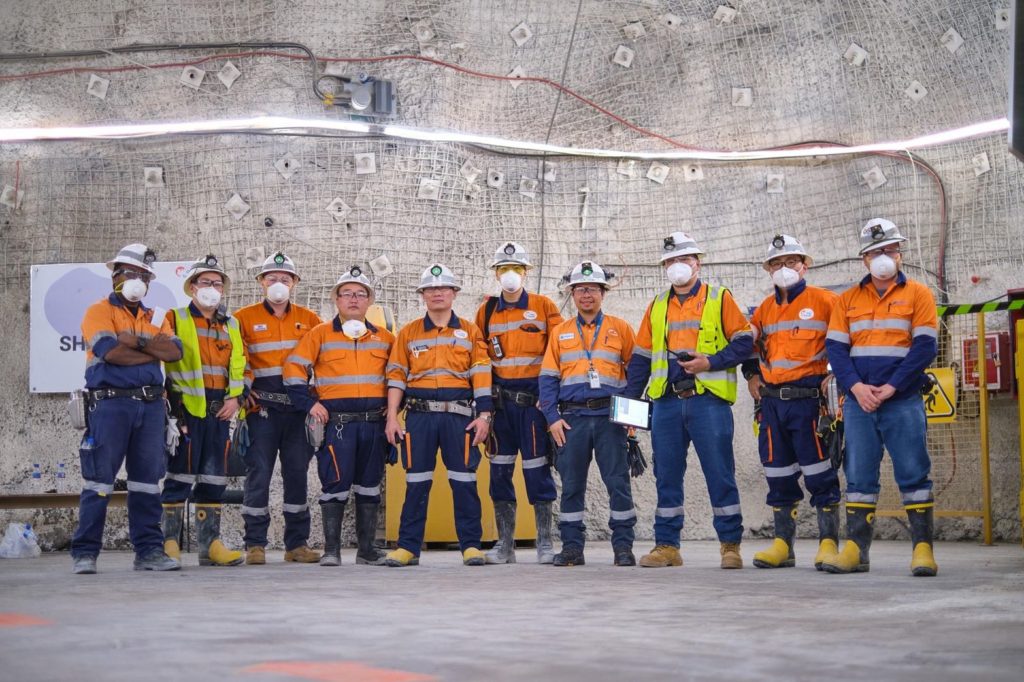Following a new long-term agreement between Rio Tinto, Turquoise Hill Resources (TRQ) and the Government of Mongolia, underground production has formally started at Oyu Tolgoi. In a major step forward, and after excavation of over 90 km of tunnels over 11 years, the first undercut rings were recently fired at the Oyu Tolgoi underground block cave copper mine in Mongolia by teams from Oyu Tolgoi including Technical Services Drill and Blast & Production working with blasting services partners Orica and Mera, and underground services contractor Redpath. The commencement of undercut blasting marks the start of the production phase of the Oyu Tolgoi underground mine and the mine is now beginning caving operations. The underground mine is expected to achieve sustainable production for Panel 0 in the first half of 2023.
The first undercut blast created a vertical void from the Apex to the undercut level (UCL) and involved 114 holes being charged with 6 t of explosives. Once charging was complete, the blast was initiated remotely using an electronic blasting system. The Hugo-Dummett deposit will be mined in a series of lifts, the first stage being Hugo North Lift 1 (500 Mt) that will utilise the panel caving mining technique. The Lift 1 mining levels are approximately 1,300 m below surface. Six distinct levels have been developed to mine Lift 1. The Apex level is 17 m above the undercut level, which in turn is 17 m above the extraction level (floor to floor). The haulage level is 44 m below the extraction level. In the footprint area, the exhaust ventilation level lies between the extraction and haulage levels.
Undercut blasting extends 18 m (one drawbell spacing) from the centre of draw in each production drive to ensure cave propagation for drawbells along the cave edge. The undercut and Apex level perimeter drives are located a minimum of 32.5 m outside the undercut blasting area to protect against cave abutment stress. After blasting an undercut ring approximately 60% of the blasted tonnage (the swell) from the ring will be mucked from the undercut level. On the extraction level, an El Teniente-style drawpoint layout is proposed for the entire footprint with drawpoints angled at 60⁰ to the extraction drives.
Mine access and ventilation of workings is enabled by a series of five shafts as well as the C2S conveyor access. Shaft 1 (6.7 m diameter) and Shaft 2 (10 m diameter) are multipurpose service, production, and intake ventilation shafts sunk to a depth of 1,385 m and 1,284 m respectively. Shaft 3 is a 10 m diameter concrete-lined intake shaft, with a depth of 1,148 m. Shaft 4 is an 11 m diameter concrete-lined exhaust shaft, with a depth of 1,209 m. Shaft 5 is a 6.7 m diameter concrete lined exhaust shaft, with two underground ventilation stations and a depth of 1,178 m. The conveyor to surface (C2S) system comprises three identical 2,202 m long 1.6 m wide steel cord conveyors operating at 6 m/s and capable of conveying the full planned production rate of 32 Mt/y. The conveyors have been installed in a 6 m wide by 5.4 m high conveyor decline.











